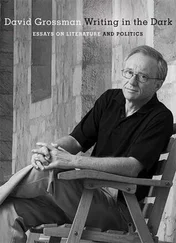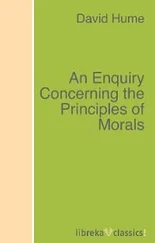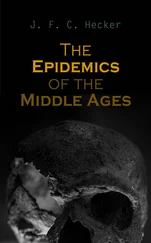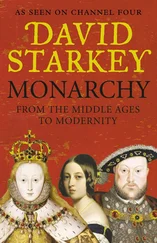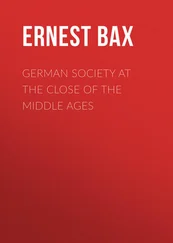§ 5. The Suburbs. Population
The Romans whom Constantine induced to settle in his new city found in its immediate neighbourhood as favourable conditions as they could desire for the villeggiatura which for hundreds of years had been a feature of Roman life. From Rome they had to travel up to Tibur or Tusculum or Lanuvium, or drive to the seaside resorts of Antium and Terracina, if they did not fare further and seek the attractions of the bay of Naples. At Constantine their villas were in the suburbs near the seashore and could easily be reached by boat. We may divide the suburbs into three principal groups: the western, extending from the Theodosian Wall to Hebdomon; the banks of the Bosphorus; and the Asiatic coast from Chrysopolis (Skutari) south-eastward to Karta Limên (Kartal). The suburb and palace of Hebdomon have already been described.
On the European side of the Bosphorus, outside Galata, was the suburban quarter of St. Mamas, where the Emperors had a house, which in the eighth and ninth centuries they often frequented. 98Farther north was one of the two places specially known as the Anaplûs — a confusing term, which was also used in the more general sense of the whole European bank of the straits. This, the southern Anaplûs, corresponds to the modern Kuru-Chesme; the other is at Rumili Hissar. Between these places were the suburbs of Promotus and Hestiae (Arnaut Keui), where there was a famous church of St. Michael, founded by Constantine and rebuilt by Justinian. This must not be confused with another church of the Archangel at Sosthenion, of which the name is preserved in Stenia, about two miles north of Rumili Hissar. On the Asiatic side, opposite Stenia and in the neighbourhood of Kanlija, were the suburbs of Boradion and Anthemius.
Opposite Constantinople itself were the towns of Chrysopolis, beautifully situated on the western slopes of a hill, and Chalcedon, now Kadi Keui. South of Chalcedon the coast turns and trends south-eastward, to form the bay of Nicomedia. Here were the suburbs of Hieria (Fanar Bagche), Drys, the “Oak” (Jadi Bostan), Satyros, Bryas (Mal-tepe), and Karta Limên. At Drys was Rufinianae, the estate of the Praetorian Prefect Rufinus, where he built a monastery and a mansion; confiscated after his death it became imperial property, and we find the palace sometimes occupied by members of the Imperial family. At Hieria, Justinian built a famous palace as a summer retreat, and in the ninth century Theophilus chose Bryas for the same purpose. These suburbs look across to the group of the Princes’ Islands, so admirably situated by their climate for villa-life; but in the days of the Empire they were not to Constantinople what Capri and Ischia are to Naples and what they were to become in modern times; they were covered with convents and were used as honourable and agreeable prisons for fallen princes.
All these suburban quarters in both continents formed a greater Constantinople connected by water-roads. If we suppose that the population of the city itself and all these suburbs approached a million, we shall probably not be much over the mark. There are no data for a precise calculation. A writer of the fifth century declares that it was generally admitted that the new city had outstripped Rome in numbers as well as in wealth. 99But unfortunately the population of Rome at this time, and indeed throughout the Imperial period, is highly uncertain; recent computations vary from 800,000 to 2,000,000. 100They vary from 500,000 to 1,000,000 for Constantinople; the probability is that in the fifth century its population was little less than a million. 101
CHAPTER IV: THE NEIGHBOURS OF THE EMPIRE AT THE END OF THE FOURTH CENTURY
IT was the mature judgment of the founder of the Empire that Roman dominion had then reached the due limit of its expansion, and it was a corollary of this opinion of Augustus that all the future wars of Rome should be wars in which defence and not aggression was the motive. His discernment was confirmed by the history of nearly fifteen hundred years. Through the long period of its duration, there were not many decades in which the Roman Empire was not engaged in warfare, but with few exceptions all its wars were waged either to defend its frontiers or to recover provinces which had been taken from it. The only clear exception was the conquest of Britain. 1For the motive of Trajan’s conquest of Dacia and of the lands beyond the Tigris (which were almost immediately abandoned) was not the spirit of aggression or territorial greed or Imperial vanity, so much as the need of strengthening the defences of the Illyrian and eastern provinces. After Trajan there were few cases even of this kind. Diocletian’s acquisitions on the Tigris were mainly designed for security, and if any war can be described as a war of self-defence it was that which carried Heraclius into the heart of Persia. There were, indeed, wars of conquest, in which the Roman government took the first step, but they were all to recover lands which had formerly belonged to Rome for centuries. If we regard unprovoked aggression against neighbours as the most heinous crime of which a state can be guilty, few states have a cleaner record than the later Roman Empire. But it was a crime which there was neither the temptation nor the power to commit. There was little temptation, because there was no pressure of population demanding more territory for expansion; and the Empire was seldom in a position to plan conquests, for all its available forces were required for self-preservation. As in the days of Augustus, there were perpetually two enemies to be faced:
hinc mouet Euphrates, illinc Germania bellum.
In the east, Parthian was succeeded by Persian, Persian by Saracen, Saracen by Turk. In the west, after the German invasions had reduced the Empire to half its size and the Teutonic kingdoms had been shaped, the Roman rulers had to confront the Frank after the Lombard, the Norman after the Frank, and then the Crusaders. But this was not all. New enemies appeared in the north in the shape of Asiatic nomads and Slavs.
In this chapter we will glance at the three enemies with whom the Empire had to reckon in the fifth century, the Persians, the Germans, and the Huns.
§ 1. Persia
When the Parthian power was overthrown by the revolution of A.D. 226, the Iranian state was renewed and strengthened under a line of monarchs who revived the glories of the ancient Achaemenids, of whom they considered themselves the true successors. Persia under the Sassanid dynasty was recognised by the Roman Empire as a power of equal rank with itself, a consideration which it showed to no other foreign state and had never accorded to the Parthian. The rise of the new dynasty occurred when the Empire was about to enter on a period of internal trouble which shook it to its foundations, and nothing shows more impressively the efficacy of the reforms which were carried out at the end of the third century than the fact that for the following three hundred years the Romans (notwithstanding the perpetual struggles which claimed their energy in Europe) were able to maintain their eastern frontiers, without any serious losses, against this formidable and well-organised enemy.
The two most conspicuous features of the Persian state were the hereditary nobility and the Zoroastrian church. The first was a point of sharp contrast, the second of remarkable resemblance, to the Roman Empire. The highest nobility were known as “the people of the Houses,” 2and probably all of them possessed large domains in which they exercised princely rights. But the soundest part of the nation seems to have been the inferior nobility, also landed proprietors, who were known as the Dikhāns. Relations of a sort which may be called feudal are supposed to have existed between the two classes of nobility, and the organisation of the army seems to have been connected with the feudal obligations. Some of the high offices of state were restricted by law to certain families, and the power of the great nobles was frequently opposed to the authority of the kings.
Читать дальше

